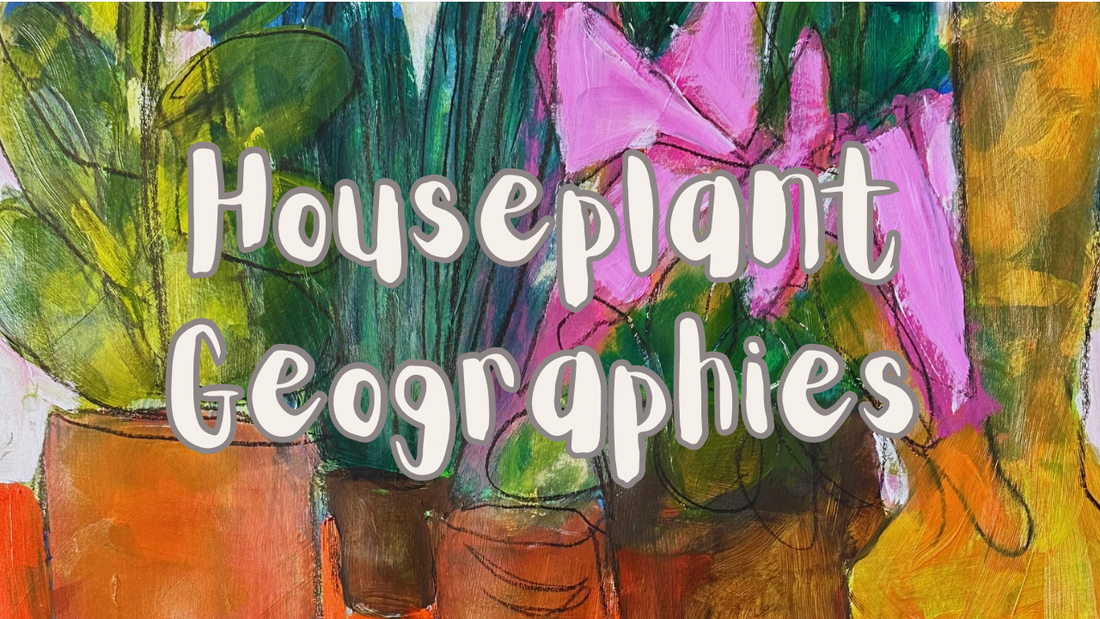
Painting Houseplant Geographies
Share
Outdoor painting season is over. My energy and focus is turning inward to the rediscovery of the quiet beauty of my collection of houseplants, which become my living muses during winter. Their sculptural leaves, shifting shades of green, and subtle play of light offer endless possibilities for creative exploration.

Bringing Nature Back Into the Studio
My houseplants bring the essence of nature, which is important to me, into my studio. Each plant has its own personality: the architectural geometry of a snake plant, or the soft tangle of ivy on a shelf, for example. I even name them!
Unlike fast-changing outdoor light, indoor plants allow for long, patient observation. I can return to the same subject day after day, watching how the morning sun moves across its leaves or how the tones shift under lamplight in the evening.
There’s a different tempo and feeling to painting, but there’s more. I can position the plants to create mini-landscapes that are intriguing or even whimsical. I feel like a kid playing with my doll house!

The Winter Palette
Winter light has a softness that transforms how I see greens. The cooler tones of daylight filtering through a window or the muted glow of a cloudy afternoon can create subtle colour variations—perfect for experimenting with layers and colours. Often, I discard local colours to others that add more depth or interest.
Observation as Renewal
Mostly though, painting houseplants reminds me that life continues to grow, even in winter. The slow rhythm of observing and painting from life enlivens my creative energy when the world outside feels frozen and still.
I also find it to be a wonderful opportunity to explore composition and intimacy in my work. Instead of vast landscapes, I focus on small ecosystems—microcosms of the natural world contained within a pot—and within groups of plants, which form geographies inside my home.

What’s Next?
I will be developing my next painting series,which I’m tentatively calling ‘Houseplant Geographies’ by painting some studies first to refine the visual language. The best thing about doing studies is that I don’t feel awful if the painting is bad as they’re done on paper, which I can rip up and throw away!
Hopefully I’ll have a few successful studies to show you in my next blog.

